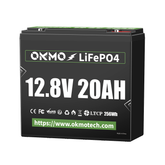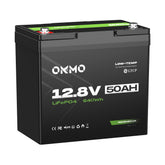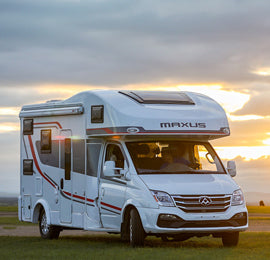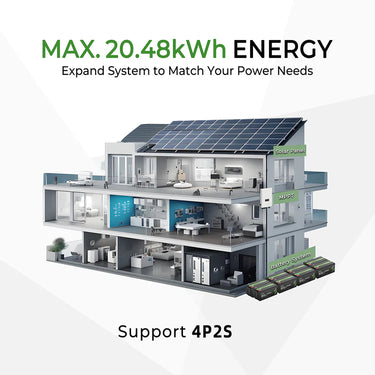How Long Will a 100Ah Battery Power a 55 lb Thrust Trolling Motor?

Under ideal conditions (25°C water temperature, calm water, lightweight hull), a 100Ah lead-acid deep-cycle battery powering a 55 lb thrust trolling motor battery (e.g., Minn Kota Endura C2) at 50% throttle (~15A draw) will last 6.6 hours. At full throttle (~52A), runtime plummets to 1.9 hours. Real-world factors like temperature, hull resistance, and battery chemistry can cause ±40% deviations.
1. Basic Calculation Model: From Current Draw to Runtime Formula
A. Thrust-to-Current Relationship
A 55 lb thrust motor typically consumes 550–620W (e.g., Minn Kota Endura C2). Current draw follows:
Current (A) = Power (W) / Voltage (V)
For a 12V system at full power:
620W / 12V ≈ 52A
B. Runtime Formula
Theoretical Runtime (hours) = Usable Battery Capacity (Ah) / Load Current (A)
-
Lead-acid batteries: 50% depth of discharge (DOD) → 50Ah usable
-
Lithium batteries: 80% DOD (e.g., Battle Born 100Ah) → 80Ah usable
Example:
At 50% throttle (15A draw):
-
Lead-acid: 50Ah / 15A ≈ 3.3 hours
-
Lithium: 80Ah / 15A ≈ 5.3 hours

2. Temperature Effects: The Silent Runtime Killer
| Temperature | Lead-Acid Capacity Loss | Lithium Capacity Loss |
|---|---|---|
| 0°C (32°F) | -30% | -10% |
| 25°C (77°F) | Baseline | Baseline |
| 40°C (104°F) | +5% (but 50% lifespan loss) | -5% |
Real-World Impact:
Winter fishing at 5°C (41°F):
-
Lead-acid usable capacity: 100Ah × 50% × 70% = 35Ah
-
Full-throttle runtime: 35Ah / 52A ≈ 0.67 hours (40 minutes)
3. Hull Dynamics: How Resistance Drains Your Battery
A. Weight-Induced Current Surge
Testing shows a 14ft aluminum boat requires:
-
18A at 300kg (empty) to maintain 5 km/h
-
27A at 450kg (loaded) → +50% current draw
Lithium runtime drops from 4.4h (80Ah/18A) to 2.96h (80Ah/27A).
B. Hull Shape Efficiency
Current demand comparison at equal speed:
-
Flat-bottom Jon boat: Baseline
-
V-hull fishing boat: +15% current
-
Rigid Inflatable Boat (RIB): +25% current
4. Battery Chemistry: The Performance Frontier
| Parameter | Lead-Acid | LiFePO4 Lithium |
|---|---|---|
| Energy Density | 30–50 Wh/kg | 90–130 Wh/kg |
| Charge Efficiency | 70–85% | 95–98% |
| Cycle Life (80% DOD) | 300–500 cycles | 3,000–5,000 cycles |
| Weight (100Ah) | 28–30 kg (62–66 lbs) | 10–12 kg (22–26 lbs) |
Cost Analysis:
For 2 hours daily use, 150 days/year:
-
Lead-acid: Replace every 3 years → 400×2=800 total
-
Lithium: 10-year lifespan → 900total∗∗Netsavingswithlithium:800 – 900=−100 (cheaper long-term)**
5. Environmental Variables: Battling Wind and Current
A. Upstream Power Drain
Mississippi River testing (16ft boat vs. 3-knot current):
-
Calm water: 22A draw → 3.6h runtime (lead-acid)
-
Against current: 38A → 2.1h runtime (-42%)
B. Crosswind Correction Overhead
30–40 km/h (19–25 mph) side winds increase current fluctuations by 20–30% due to steering adjustments.
6. Optimization Tactics: Hardware and Technique
A. Propeller Upgrade
A high-pitch propeller (e.g., KIPAWAY 55LB-specific) boosts efficiency by 15%:
-
Stock propeller: 52A at full throttle
-
Optimized propeller: 44A
Runtime gain: (52–44)/52 ≈ 15%
B. Pulse Navigation Strategy
Combine "full-throttle bursts + coasting":
-
2 mins at 52A (1.7Ah used) + 8 mins off → 1.7Ah total
-
Vs. 10 mins at 15A → 2.5Ah used
32% energy saved
Conclusion: Dynamic Modeling for Accurate Predictions
To reliably estimate runtime, build a dynamic model:
Actual Runtime = Theoretical × Temp Factor × Hull Factor × Battery Aging × Environmental Factor
Use tools like Minn Kota’s Runtime Calculator with real-world GPS data (e.g., Garmin Striker 4) for calibration. Only then can you transform "range anxiety" into "precision control" on open water.










